A Group Tour just for the day, along the North Norfolk coast today. It was a cloudy start and finish, but in between there were some bright and even sunny intervals, which definitely had not been in the forecast. The overnight drizzle dried up just before we met up and it stayed dry all day.
We started the day at Kelling. As we got out of the minibus in the village, a Greenfinch was wheezing from the tree above us. A pair of House Sparrows were mating on the roof of the house across the road. A pair of Stock Doves flew over and one landed on the roof of the converted barn by the main road. A Chaffinch was singing by the school as we set off up the lane.
We walked down the lane towards the Water Meadow. There was not much singing in the hedges this morning, but one of the group did spot a web high up in a tree by the path, which turned out to be a nest of Small Eggar moth caterpillars. One caterpillar was still on the side of the web. Scanning from the gate, we could see one or two Brown Hares in the field beyond.
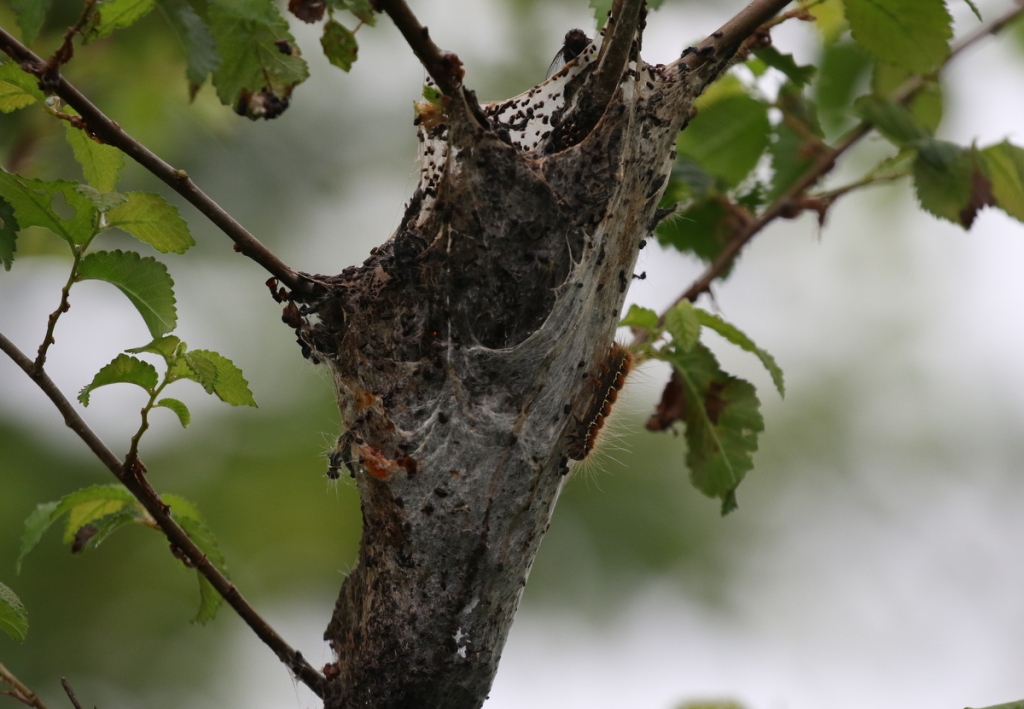
As we got out into the open by the Water Meadow, there were a couple of Common Whitethroats and several Linnets in the bushes. A Sedge Warbler was singing here, in the brambles just the other side of the hedge. A Red Kite was hanging in the air over the field to the west. Several Sand Martins were hawking for insects low over the Water Meadow pool.
There had been a Marsh Warbler singing here for the last week, and as we got to the crosstrack, we could hear it distantly so we carried straight on along the path down towards the beach. A family of Stonechats was along the fenceline on the hill above as we passed, male, female and a streaky juvenile.
There were a couple of people already there, standing and listening to the Marsh Warbler singing. What an amazing song! Not so much its own, as a constant stream of different calls and songs borrowed from other species it had heard, both in Europe and on its African wintering grounds. We could hear it mimicking Blackbird, Swallow, Blue Tit, Bee-eater (probably Blue-cheeked!), and many more we couldn’t recognise.
The Marsh Warbler was singing from thick vegetation in a reedy ditch, but a couple of times it came up into the tops of the reeds briefly, before flying down along the line of the ditch and diving back into the vegetation. No the best views, but good to see it at all – and with Marsh Warbler it is all about the song. A Reed Warbler started singing nearby for comparison, lacking the varied mimicry of the Marsh Warbler, much more methodical, rhythmic.
There were a few other birds here, out on the Quags – an Egyptian Goose, a couple of Avocets and a Little Egret around the pools and ditches. Several Rooks were feeding out on the grass. A couple of Meadow Pipits perched up on the fence posts.

Carrying on along the path, we climbed up onto the shingle ridge to look at the sea. There were several small lines of Gannets passing offshore, a mixture of adults with their black-tipped white wings and younger more mottled birds. There were one or two Sandwich Terns closer in, but most of the terns were distant off here this morning.
Two adult Mediterranean Gulls flew in from behind us, dropping over the shingle and down towards the sea. We could see their white wing tips, black hoods and bright red bills as they came past us. They dipped down to the water just beyond the breakers and several immature (2nd calendar year) Mediterranean Gulls then drifted in from the east, dip feeding just offshore.
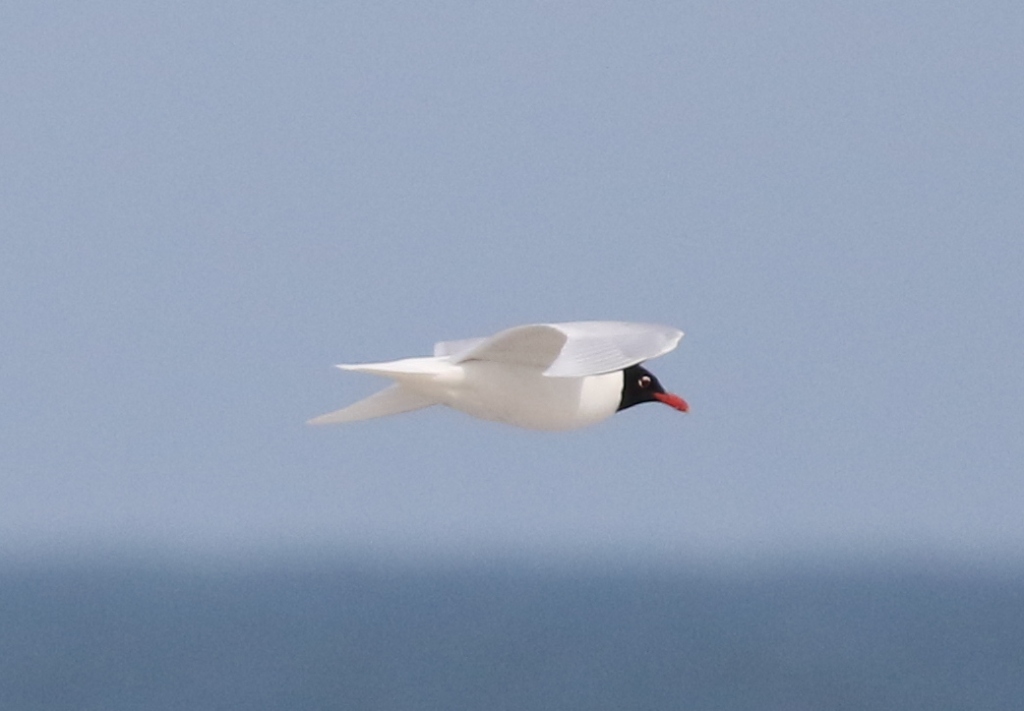
As we started to walk back along the path by the Quags, a Cuckoo flew past over the hillside above us and landed on the fence by the path up to the gun emplacements, calling. It dropped down to the bushes behind the beach where we could just see it looking for caterpillars in the blackthorn. We walked up the hill a short way and got it in the scope, where it was mobbed by a Common Whitethroat before it dropped down out of view.
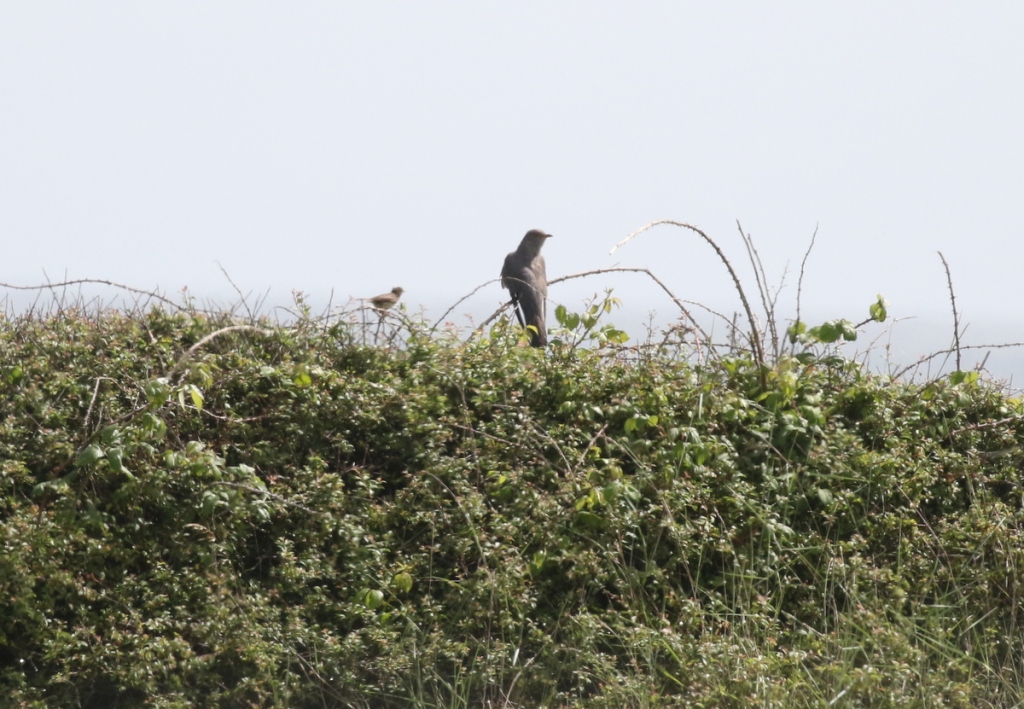
There were several butterflies out now in the sunshine, including Common Blue and Small Heath. We stopped to look at some Southern Marsh Orchids in the dunes slack. A few Meadow Pipits, Reed Buntings and Linnets were flitting around, in and out of the grass and around the fences.
The Marsh Warbler was still singing, so we stopped for another quick listen on our way past. Then we headed back up the lane, stopping briefly to admire a couple of smart pink-breasted male Linnets on the brambles by the path. A Blackcap was singing now in the taller hawthorns by the copse, and several flicked off ahead of us, presumably a family group from the calls. A little further up, two Bullfinch came up from the beck and flew ahead of us a couple of times before disappearing round the back of the hedge.
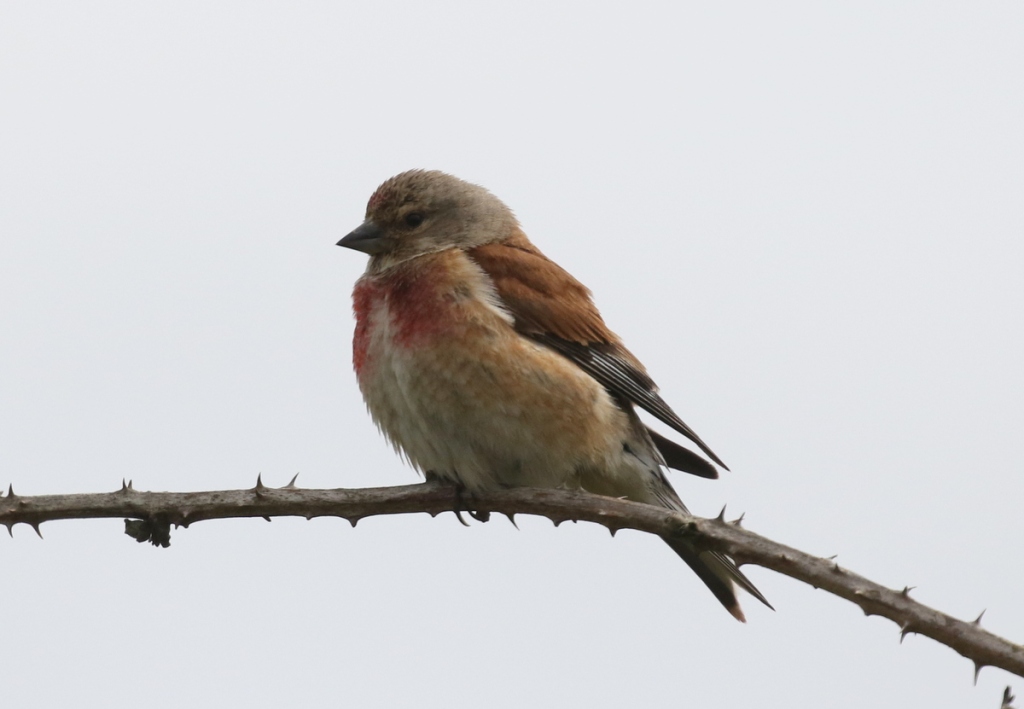
We drove back west and parked at Walsey Hills. There was nothing apart from a couple of Coot on the Snipe’s Marsh pool today, but across the road we could see two Spoonbills distantly on the grazing marshes over at the back of the Serpentine. We crossed the road and set off up the East Bank. One or two Marsh Harriers circled over the reeds.
The male Yellow Wagtail is still here and still singing, having failed to attract a female. But with the vegetation having grown considerably it is very hard to see now in the long grass. We kept stopping to scan the ground for it as we walked up. It took several stops, but finally we saw it flying. It sang a couple of times in flight, stalling and parachuting down as it did so, then dropped back down into the long grass again. After a couple of seconds it came out again, and this time landed on a small mound of earth on a bare patch of ground where we could get it in the scopes. A very smart male – bright canary yellow – it would be nice to have them breeding here again.
While we were watching the Yellow Wagtail, we noticed a single Curlew behind it, an early returning bird back for the winter already. A lone drake Wigeon then walked out of the ditch next to it – presumably in this instance one which had decided to over-summer here.
When we heard Bearded Tits pinging behind us, we turned to scan the reedbed. A tawny-coloured juvenile climbed up into the reeds on the back edge of the ditch close by, and we had a great view of it as it flicked around, presumably trying to locate the rest of the family. It flew off down along the ditch.
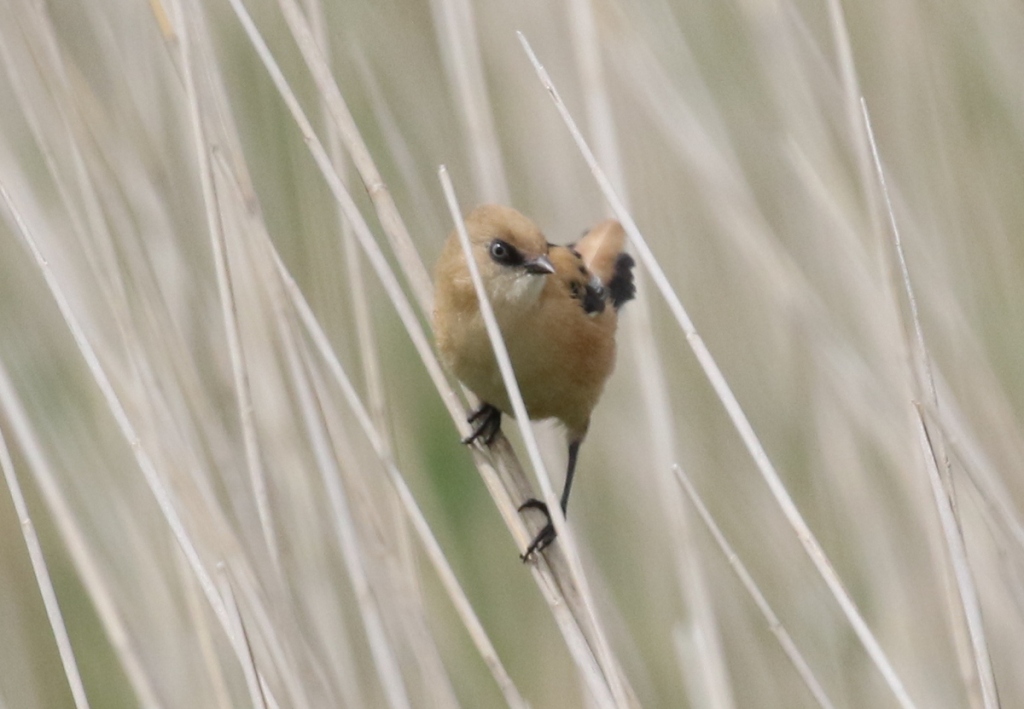
There were a few more waders around the Serpentine, several Avocets and some Redshank, including a couple of juveniles in the top corner. A Little Ringed Plover was very well camouflaged on the dry mud down at the front and two Dunlin still sporting their summer black belly patches were in the water behind one of the islands further back. When we heard Greenshank calling, two dropped in to Pope’s Pool where we got them in the scopes.
There were three Barnacle Geese on one of the islands on Pope’s Pool two – presumably part of the ever-increasing UK feral population. The Spoonbills were still fast asleep, but one did wake up and flash its spoon-shaped bill briefly.
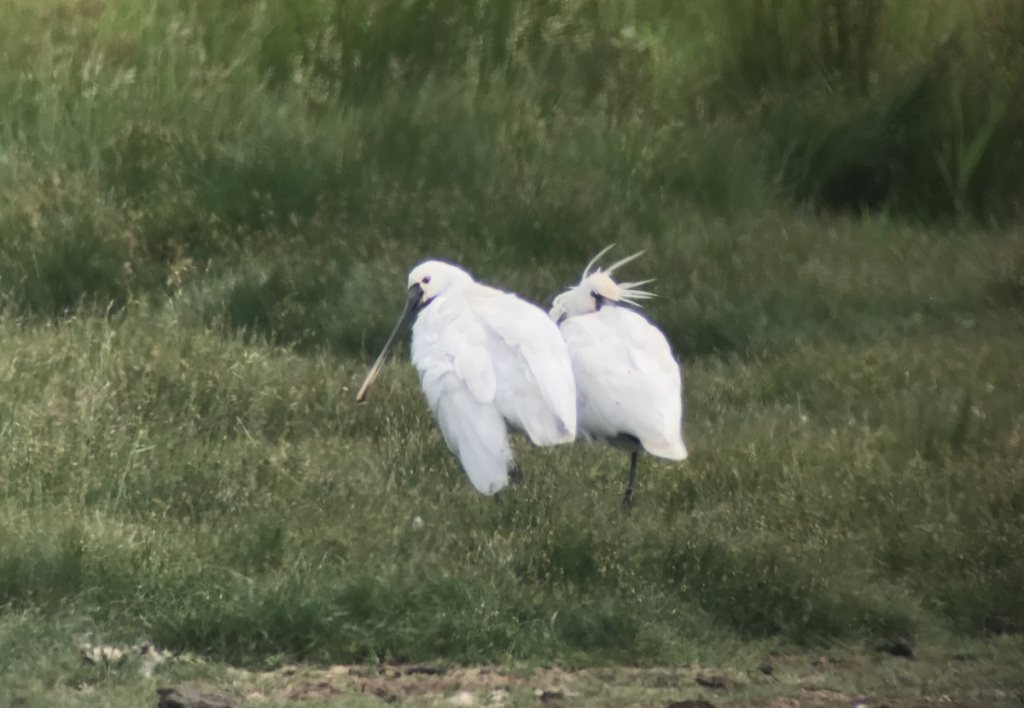
As we walked on towards Arnold’s Marsh, one of the volunteers told us there had been a Little Gull around earlier. The first birds we saw when we scanned were not one but two Little Gulls, both 1st summer birds, asleep by the small shingle island at the back. There were two Sandwich Terns next to them, and nearby, a single Common Tern. A single Ringed Plover was on the sand in the back corner.
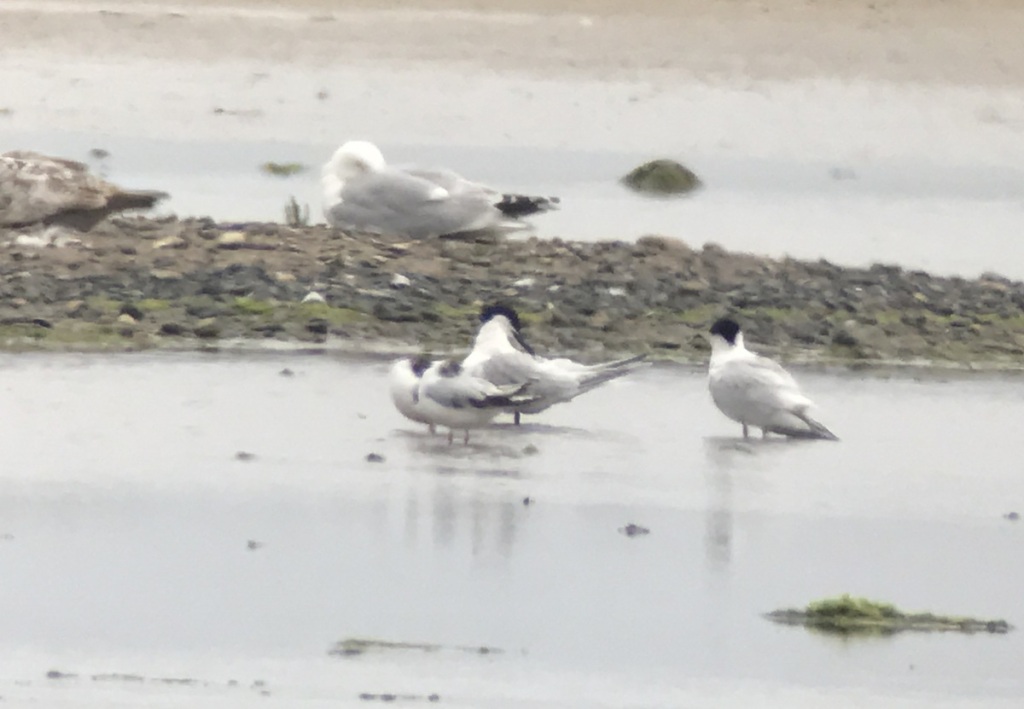
The day’s tern list was further swelled with a high count of 21 Little Terns feeding offshore, from the beach. Then it was time to walk back for lunch. As we passed Don’s Pool now, an adult Little Grebe was feeding two stripy-headed juveniles, diving repeatedly under the blanket weed in one corner and resurfacing with an assortment of morsels.
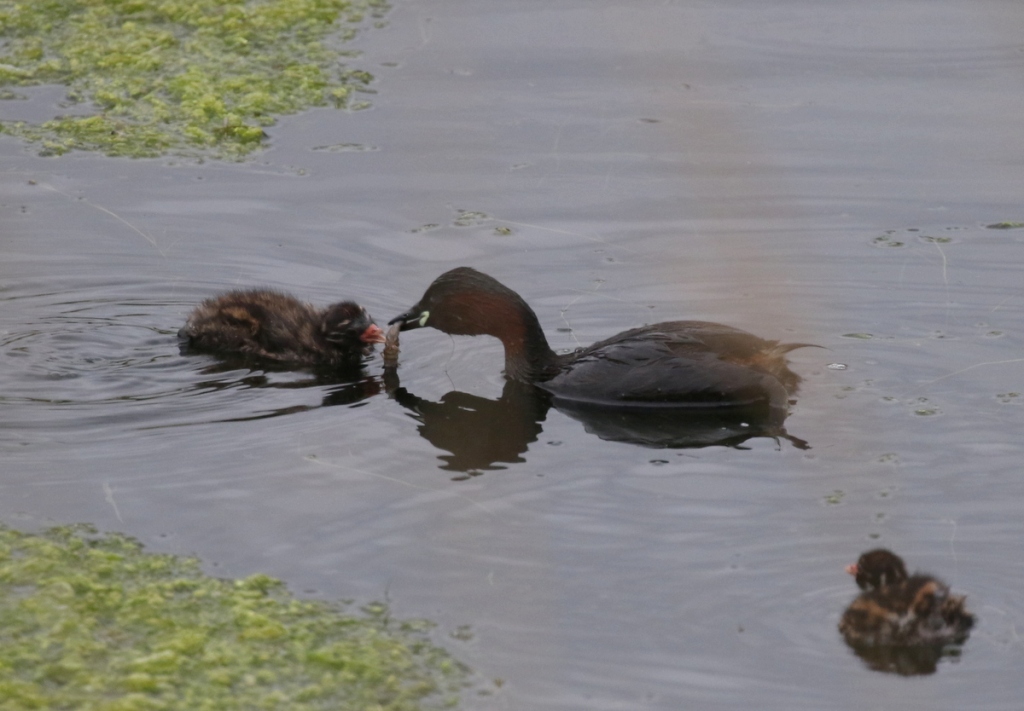
We stopped for lunch on the picnic tables in front of the Visitor Centre, in the sunshine. Afterwards, we set off further west. A Great White Egret was flying out over the grazing marshes as we passed Holkham.
We spent the rest of the afternoon at Titchwell. It had clouded over now, and lots of Swifts and House Martins were hawking low over the reedbed. A couple of Marsh Harriers were up over the back, and we got the scopes on an orange-headed recently fledged juvenile perched in a bush. A Sparrowhawk shot through the sallows with prey in its talons. and a Hobby was perched in one of the dead trees at the back.
From Island Hide, we could see the Spotted Redshanks on the Freshmarsh but they were right back against the reeds on the far side, still in their jet black breeding plumage. They have returned already from their breeding grounds and will moult very quickly over the coming weeks. We had a look from here but figured we could get a slightly closer view from Parrinder Hide.
A single Pintail was the surprise duck on here today. There were still a few Teal, more returning birds already. Plus the resident Common Pochard, the drakes already moulting into drab eclipse plumage, and Tufted Ducks.
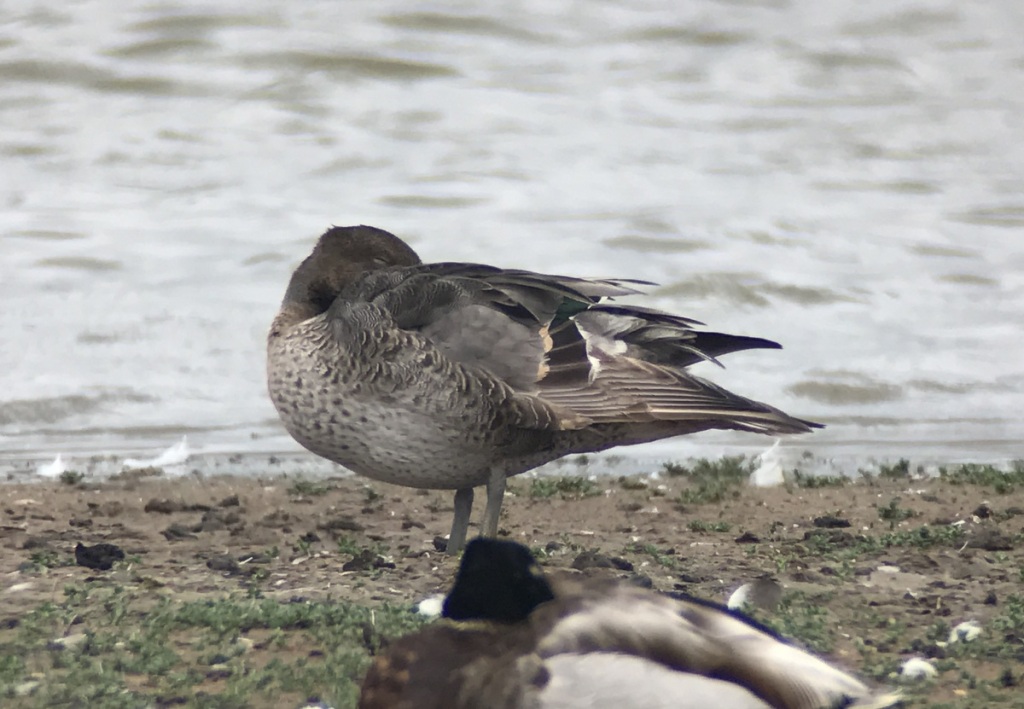
As we walked out of Island Hide, a couple of people were photographing two Common Lizards which were basking on the fence by the path, so we stopped for a look too.

Walking down the path to Parrinder Hide, a Common Redshank was alarm calling on the top of a post just above us. We managed better views of the Spotted Redshanks from here, until they were flushed by a Marsh Harrier flying over the reeds just behind and they disappeared into the other corner, behind Avocet Island, out of view. Two Bar-tailed Godwits were in with the Black-tailed Godwits feeding on the Freshmarsh too, until they flew off.
Looking carefully through the Black-tailed Godwits we eventually found a single limosa Continental Black-tailed Godwit in amongst the commoner Icelandic birds. Presumably from its colour rings one of the very small and declining breeding population on the Ouse Washes.
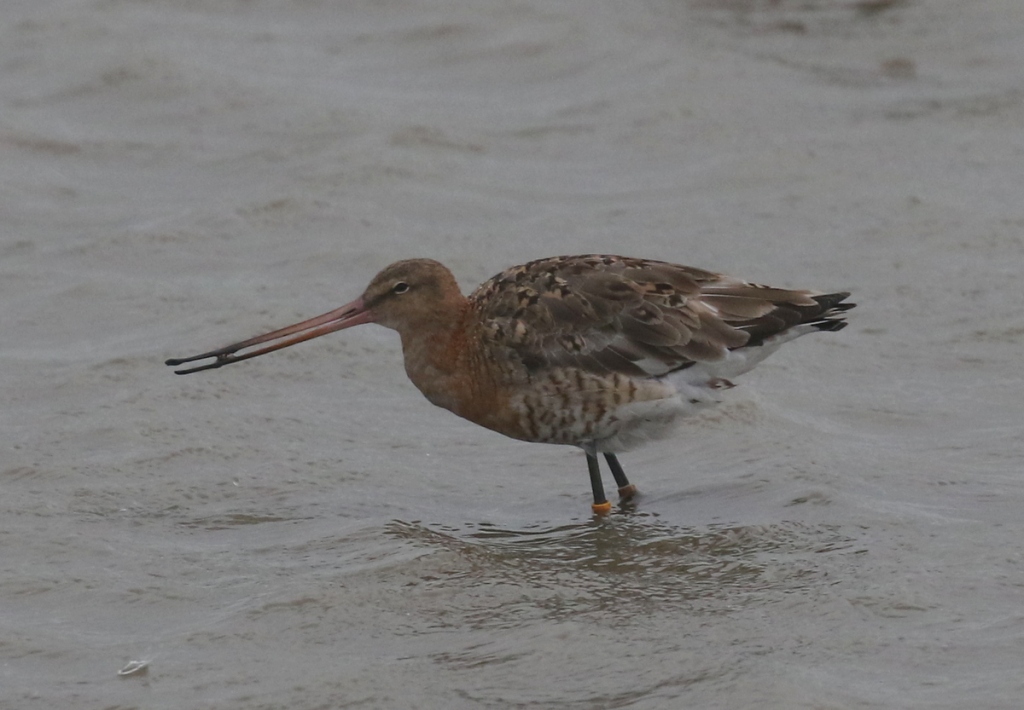
There was nothing on Volunteer Marsh as we passed and we could only see a couple more Black-tailed Godwits on the Tidal Pools, so we continued straight on to the beach. The tide was coming in and it was breezy out here, so we didn’t stay long. There were lots of gulls on the beach up towards Thornham Point, presumably feeding on shellfish washed up on the northerly winds. There were lots of Oystercatchers along the shoreline and a Curlew and a Bar-tailed Godwit over towards Brancaster.
We had to head back now. A more thorough scan of the Tidal Pools on the way back revealed a small group of Turnstones huddled in the lee of one of the islands. A Little Tern flew over calling. As we passed the Freshmarsh, two Common Terns were flying round now. Then it was back to the car park and time to get everyone home.
















